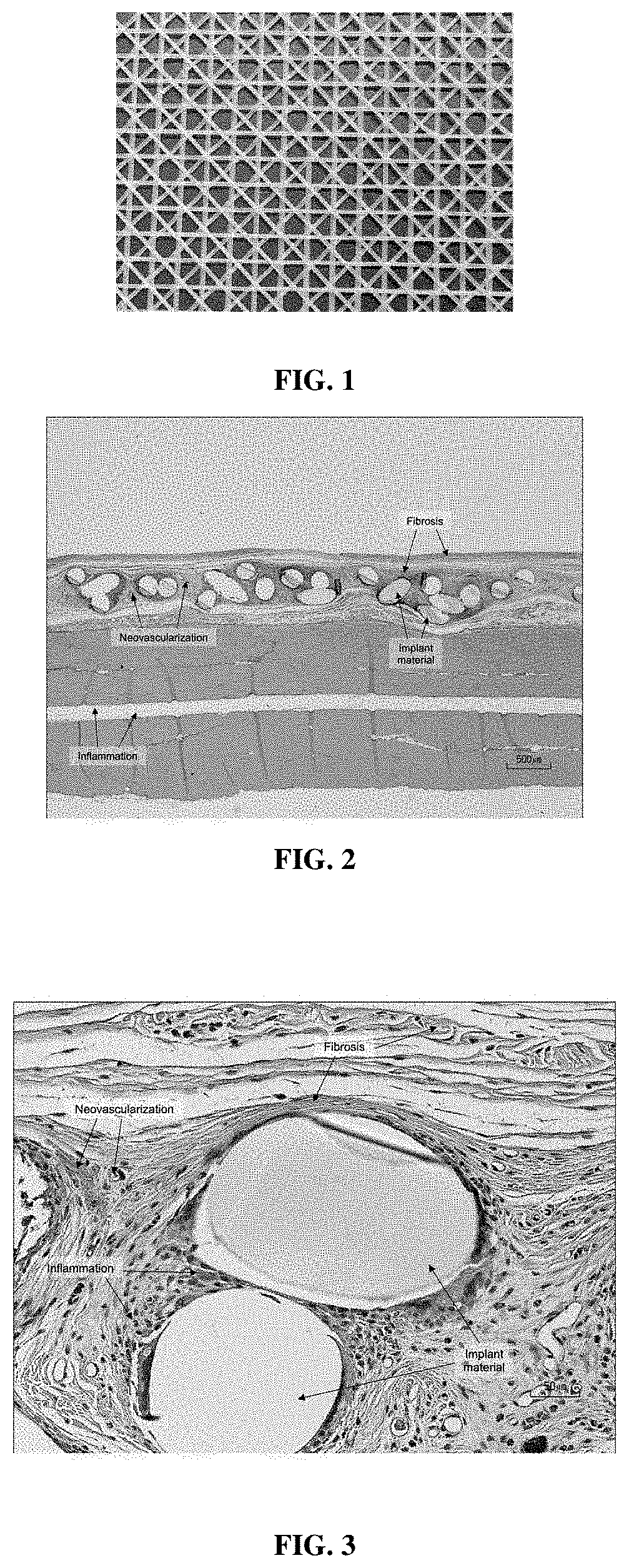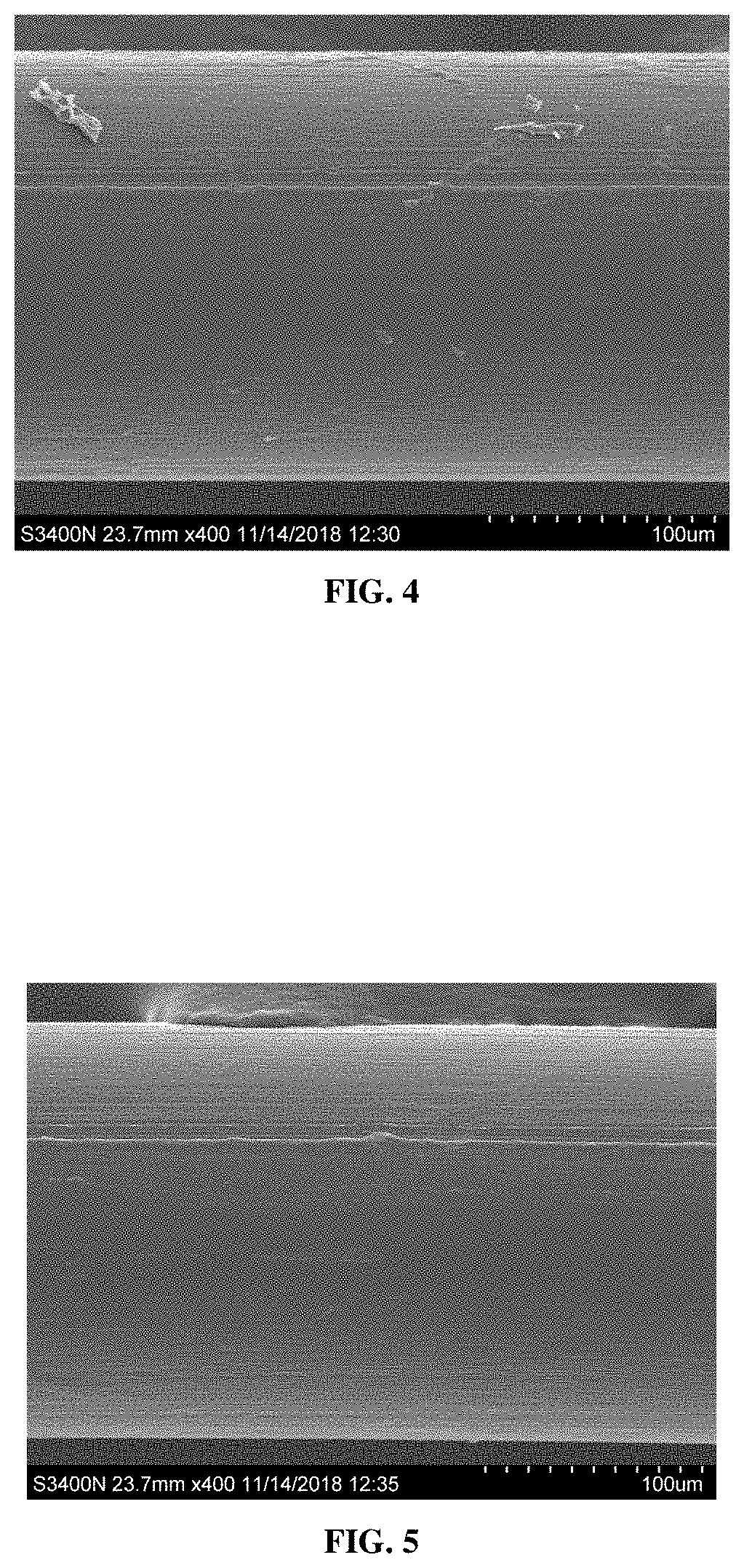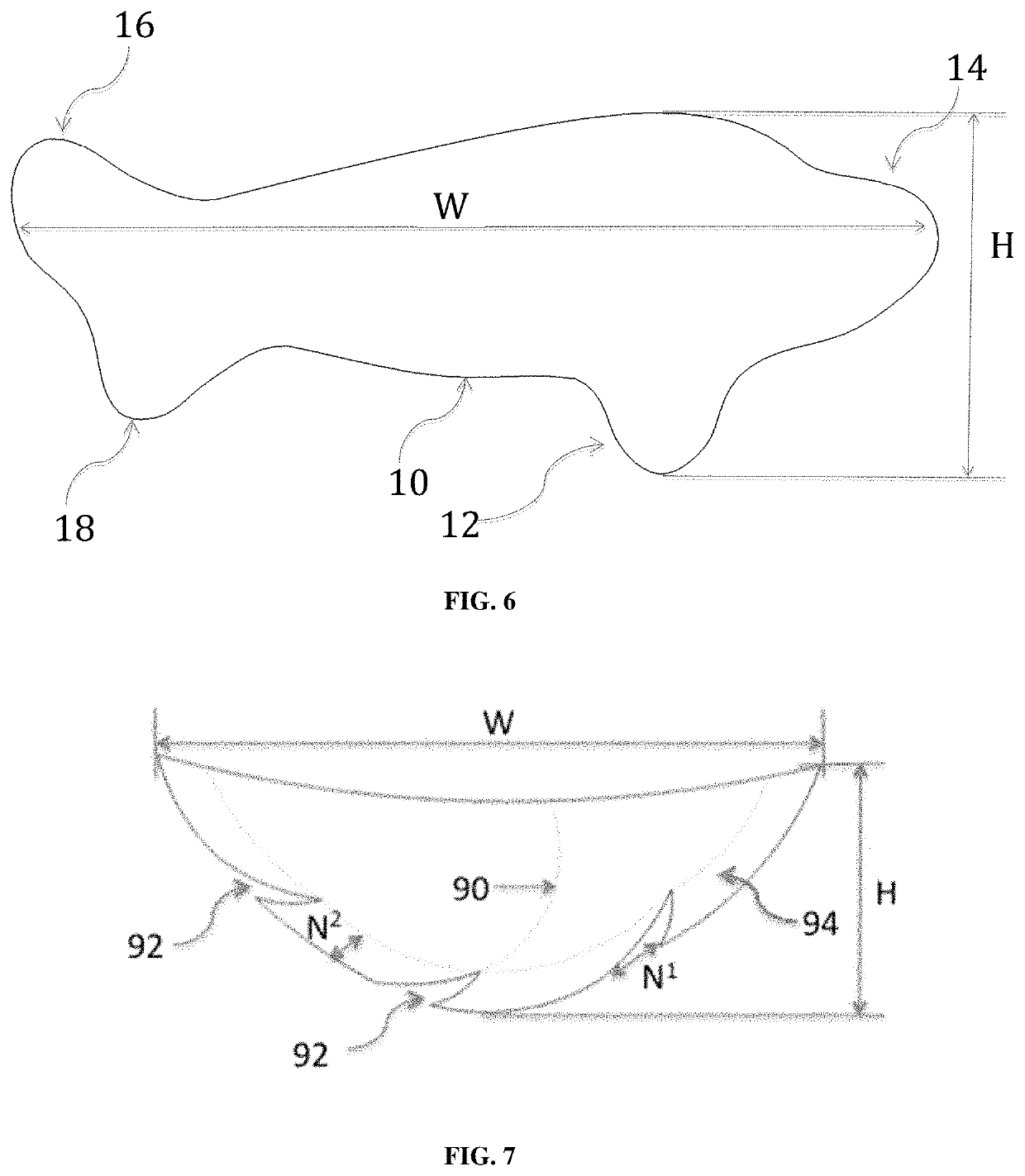Medical devices containing compositions of poly(butylene succinate) and copolymers thereof
- Summary
- Abstract
- Description
- Claims
- Application Information
AI Technical Summary
Benefits of technology
Problems solved by technology
Method used
Image
Examples
example 1
ent Melt Extrusion of Succinic Acid-1,4-Butanediol-Malic Acid Copolyester with Two Stage Orientation in Convective Chambers to Produce Monofilament Fiber for Implants
[1077]Succinic acid-1,4-butanediol-malic acid copolyester (Tepha lot 180333) with weight average molecular weight of 184 kDa, Tm=115° C., (melt flow rate (MFR) at 190° C. / 2.16 kgf of 5 g / 10 min) was dried under vacuum overnight to less than 0.01% (w / w) water. Dried pellets of the polymer were fed into an extruder barrel of an AJA (Alex James Associates, Greer, S.C.) ¾″ single screw extruder (24:1 L:D, 3:1 compression) equipped with a Zenith type metering pump (0.16 cc / rev) and a die with a single hole spinneret (0.026″, 2:1 L:D) under a blanket of nitrogen. The 4 heating zones of the extruder were set at 75° C., 165° C., 180° C. and 180° C. The extruder was fitted with a quench bath filled with water at 35° C. and set up with an air gap of 10 mm between the bottom of the spinneret and the surface of the water. Two 2-rol...
example 2
ent Melt Extrusion of Succinic Acid-1,4-Butanediol-Malic Acid Copolyester with Multi Stage Incremental Orientation in Conductive Chambers to Produce Monofilament Fiber for Implants
[1078]Succinic acid-1,4-butanediol-malic acid copolyester (Tepha lot 180333) with weight average molecular weight of 184 kDa, Tm=115° C., (MFK 190° C., 2.16 kg, 5 g / 10 min) was dried under vacuum overnight to less than 0.01% (w / w) water. Dried pellets of the polymer were fed under a blanket of nitrogen into the extruder barrel of a 2½″ American Kuhne single screw extruder (30:1 L:D, 3:1 compression) equipped with a Zenith type metering pump model HPB917, a die with 0.5 mm—8 hole spinneret and 8 heat zones. The 8 heating zones of the extruder were set between 40° C. and 200° C. The extruder was fitted with a quench bath filled with water at 35-70° C. and set up with an air gap of 10 mm between the bottom of the spinneret and the surface of the water. Two 5-roll godets were positioned after the quench bath, ...
example 3
ment Extrusion of Succinic Acid-1,4-Butanediol-Malic Acid Copolyester to Prepare Implants
[1080]Succinic acid-1,4-butanediol-malic acid copolyester (Tepha lot 180333) with weight average molecular weight of 184 kDa, Tm=115° C., (melt flow rate (MFR) at 190° C. / 2.16 kgf of 5 g / 10 min), was dried under vacuum overnight to less than 0.01% (w / w) water. Dried pellets of the polymer were fed into an extruder barrel of an AJA (Alex James Associates, Greer, S.C.) ¾″ single screw extruder (24:1 L:D). The extrusion barrel contained 4 heating zones, a metering pump and a spin pack assembly. The pellets were gravity fed into a chilled feeder section and introduced into the extruder with temperature profile set as follows: Chimney 40° C.-100° C., Spinneret 170° C.±30° C., Pump 170° C.±30° C., Block 170° C.±30° C., Zone 4 160° C.±40° C., Zone 3 150° C.±40° C., Zone 2 120° C.±50° C., Zone 1 30° C.-40° C., Feed Zone: Ambient temperature. The heated and homogenized melted resin from the extruder was ...
PUM
| Property | Measurement | Unit |
|---|---|---|
| Temperature | aaaaa | aaaaa |
| Temperature | aaaaa | aaaaa |
| Temperature | aaaaa | aaaaa |
Abstract
Description
Claims
Application Information
 Login to View More
Login to View More - R&D
- Intellectual Property
- Life Sciences
- Materials
- Tech Scout
- Unparalleled Data Quality
- Higher Quality Content
- 60% Fewer Hallucinations
Browse by: Latest US Patents, China's latest patents, Technical Efficacy Thesaurus, Application Domain, Technology Topic, Popular Technical Reports.
© 2025 PatSnap. All rights reserved.Legal|Privacy policy|Modern Slavery Act Transparency Statement|Sitemap|About US| Contact US: help@patsnap.com



